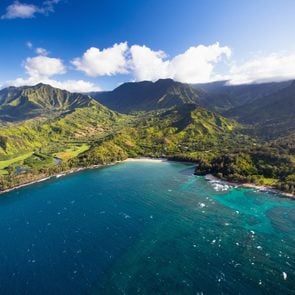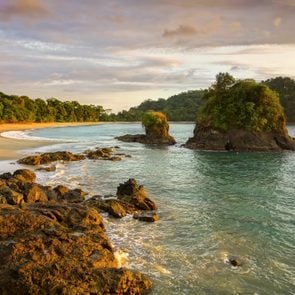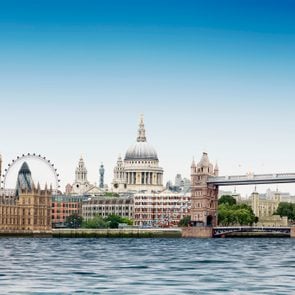The Best Places to See the Northern Lights for the Experience of a Lifetime
Updated: Mar. 20, 2024
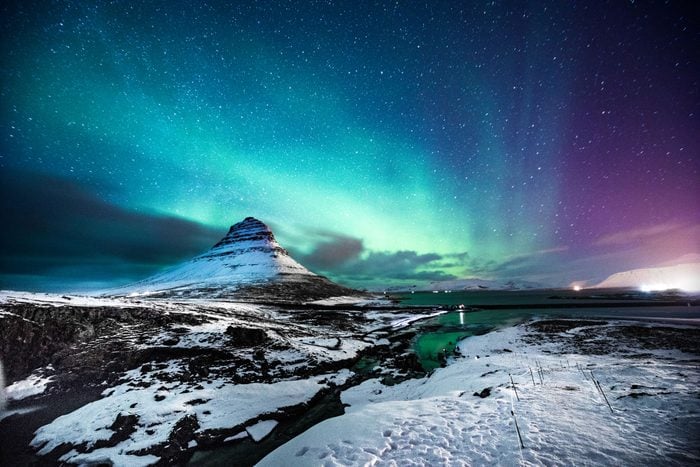
From Alaska and the Arctic to the Lower 48 and European escapes, here's where to see the northern lights this winter
Our editors and experts handpick every product we feature. We may earn a commission from your purchases.
The first time I saw the northern lights, they were a faint glow in the Alaska sky. It was early September, well before peak northern lights season, so the display was fairly weak, but it sparked my curiosity. The following month, I was on an Arctic expedition cruise from Greenland to Canada and caught the aurora borealis in all its glory. I had never—and still haven’t—seen anything like it, so I began researching where to see northern lights around the world.
I’m not alone in my quest to catch the brilliant band of lights dancing across the sky. It’s a bucket-list experience, and it’s easy to see why: The aurora borealis is a mesmerizing display of Mother Nature that lights up the night sky at the north and south poles. Because you can see it only in the Northern Hemisphere (hence the name northern lights), you need to know exactly where to see the northern lights before planning your trip.
From Alaska and the Arctic to Northern Europe and even the Lower 48 in the good ol’ U.S. of A., here are the best places to travel to see northern lights, including far-flung destinations, spots closer to home and a few ideas you may have never thought about.
Get Reader’s Digest’s Read Up newsletter for more travel, humor, cleaning, tech and fun facts all week long.
What are the northern lights, exactly?
OK, folks. Put on your science caps for this one. Essentially, the northern lights are caused by an interaction between solar wind and the earth’s magnetic field and atmosphere.
Solar wind is basically a stream of charged particles that escape the sun and distort the earth’s magnetic field as it approaches. When these charged particles enter the earth’s atmosphere, the planet’s magnetic field deflects them toward either the North Pole or South Pole. They “excite” gases in our atmosphere and make them glow, kind of like how gas lights up in a fluorescent tube.
This process can cause the earth’s magnetic field lines to disconnect from the planet, and when they “snap back” into their normal position, the charged particles push into the earth’s atmosphere, causing the aurora. The more magnetic field lines that disconnect from and snap back to earth, the further south the northern lights are viewable.
When this happens in the Northern Hemisphere, we call them the northern lights, or aurora borealis. In the Southern Hemisphere, they’re known as the southern lights, or aurora australis. Both are a sight to behold, but it’s the northern lights that have captured our attention throughout history—they were even named one of the seven natural wonders of the world.
There’s a reason for that: Unlike in the South Pole, many communities exist in the Arctic, and tourism infrastructure is in place to support northern lights chasers. While it’s possible to see the southern lights (say, from a cruise around Antarctica), it is much less accessible.
When is the best time to see the northern lights?
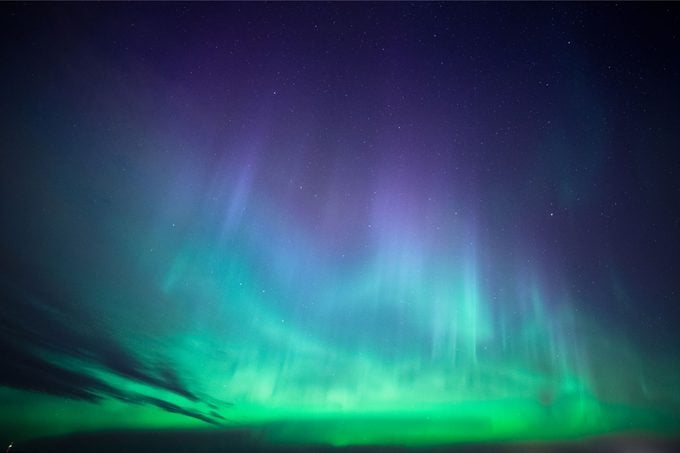
Regardless of the country or continent, the best time to see the northern lights is winter. Technically, you can catch them in the summer, but they are easiest to see when it’s pitch black outside. Because winter nights are longer, there are more hours of darkness and more hours to potentially see those awe-inspiring ribbons of light in the sky.
Once you decide where to see northern lights, you can narrow down the timing to boost your chances of clear night skies. Clouds can, um, cloud the view. So months that are prone to rain, storms and cloudy skies (which tend to be spring and fall, in many destinations) aren’t ideal. In many places, winter months tend to be colder but drier and clearer. Each destination has its own northern-lights-viewing schedule, which takes into account the region’s geography and weather patterns, both of which influence when the skies will be darkest and clearest.
If you want to see the northern lights in Scotland, for example, the best time to visit Scotland will be between November and February. But you may want to narrow that window down further based on other things you want to do during your trip. Want to catch one of Edinburgh’s famous Christmas concerts before viewing the aurora borealis? Book a trip for December. Want to avoid crowds? Head there in February.
The same goes for other destinations. The best time to visit Alaska depends on what you want to do, but if the aurora borealis is on your itinerary, plan your trip between December and April.
Why is it a particularly good idea to see them right now?
Over the next 18 months, the northern lights will be more intense, so now is an especially great time to see them. Solar activity is expected to increase—as are your chances of viewing the northern lights—until the fall of 2024, so the aurora borealis will be more viewable, more intense and more frequent from more places around the world.
Why is now the best time to see the northern lights? Because our sun goes through an 11-year period, known as a solar cycle, in which it flips its magnetic poles. According to Nathan Postle, a naturalist in Northern Minnesota, the sun loses magnetism and weakens in the middle of the cycle.
“Next year will be year five, so more of the sun’s electrons will hit the earth’s atmosphere, and that’s what causes the northern lights. So 2024 will be a particularly strong northern light season.” Postle notes that 2023 has already been especially strong, and he’s seen the northern lights more frequently than normal where he works in Minnesota’s Boundary Waters Canoe Area.
Where are the best places to see the northern lights?
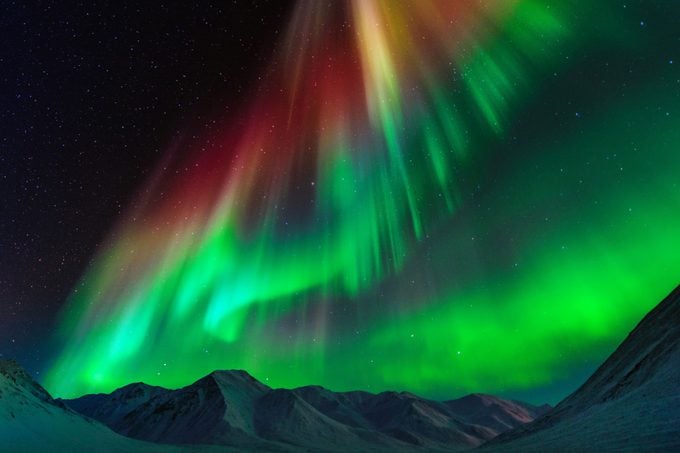
The best places to see the northern lights are all pretty far north, and they’re all winter-travel destinations, so be sure to pack plenty of warm clothing. Not sure where, exactly, to book your flight? Here’s where to see northern lights around the world.
Norway
Scandinavia is one of the best places to see the northern lights, and Norway, in particular, is a top pick. You have so many options for catching nature’s light show: See it in mainland cities like Tromsø or far-flung places like the northern archipelago Svalbard. As these places are some of the northernmost cities you can visit, your odds of seeing the lights increase because you’ll experience more hours of darkness, which means more hours of the aurora.
Where to stay: Svalbard typically tops the lists of the best cities for seeing the northern lights, and with good reason. It’s one of the world’s northernmost inhabited cities, so it has a lot of hotels, restaurants and activities to complement your night-sky pursuits. (Tripadvisor reviewers rave about the Funken Lodge and its A-plus service.) Tromsø is another great pick, as it’s a lively city (with plenty to see and do), and it celebrates with a northern lights festival in late January and early February.
Iceland
I wish I could say that I saw the northern lights in Iceland, because I know this is one of the best places in the world to catch them. Unfortunately, it rained every single day during my eight-day trip here, so even though the northern lights forecaster app I downloaded said that the lights were ablaze several nights during my trip, they were entirely blocked by clouds every night. Dang!
This is a great example of why it’s important to plan other activities during your trip. Northern lights viewing is never guaranteed, but if your itinerary is packed, you’ll still have a great time. During my visit to Iceland, I spent the week hiking, soaking in thermal baths and taking photos, so it was still a great trip, and I have another reason to return.
Where to stay: Capital city Reykjavík is a great place to base yourself for the first few nights of the trip, but Iceland is best explored by car or camper van. Orient yourself in the big city, then plan a road trip away from the city lights so you have a better chance of spotting the aurora. While you’ll find hotels and bed-and-breakfasts all over the island—a Tripadvisor Travelers’ Choice pick, Reykjavík Residence Hotel is a good option—you’ll also find plenty of companies renting camper vans that allow you to stay nimble and park/sleep all over. If you decide to stay within Reykjavík, head to Öskjuhlið, as this wooded area within Reykjavík sits at 200 feet above sea level, so you have a better chance of viewing than you would in the city center.
Alaska
Americans planning where to see the northern lights often think of Scandinavia or Europe, but let’s not overlook our own backyard! Hands down, the best place to see the northern lights in the United States is Alaska.
Alaska in the winter is magic on its own, so when you add in the aurora borealis, you have yourself one handsome holiday. The state is enormous, so there is no shortage of places to catch the northern lights here, and you’ll find plenty of winter activities, like snowshoeing and dog sledding.
Where to stay: Fairbanks is an especially good pick because it’s right under the aurora oval (which is where aurora activity is concentrated), and it’s relatively easy to get to because there are frequent flights. You’ll also have plenty of hotel options right within the city and remote glamping options outside the city.
Minnesota
To see the northern lights within the contiguous 48 states, head to Minnesota, where dark skies and plenty of winter activities welcome you. According to nature photographer Travis Novitsky, the best places to see the northern lights in Minnesota are Boundary Waters Canoe Area (in the northeast), Voyageurs National Park (a certified International Dark Sky Park in the northwest) and the Lake of the Woods and Northwest Angle areas (also in the northwest).
Novitsky recommends parking yourself along the south shore of an inland lake to catch (and photograph) views of the lights looking north over the lake, along with stunning reflections below on the lake itself. When I was looking for lights above Voyageurs National Park, I checked the Space Weather Prediction Center’s 30-minute aurora forecast every night to know when I had the best chance of spotting them.
Where to stay: As most of the best opportunities to view the northern lights in Minnesota are in the northwest part of the state, you’ll probably want to base yourself in or around Ranier, Minnesota. The city has a small airport receiving a handful of flights, or you can book a flight into Duluth and drive a few hours up to Ranier. In terms of accommodations, you can go with a traditional (and very nice) option like the Cantilever Hotel, or pick from one of several lodges that exist right along the border of Voyageurs National Park.
Michigan
At the tiptop of Michigan’s lower peninsula is Headlands International Dark Sky Park, one of the best places to see the northern lights in the United States. Here, you’ll have 550 acres of wilderness to witness the aurora, though you won’t want to look for it deep in the forest, as the trees could block your view. Because this is one of the more southern destinations, it’s harder to predict when you’ll see the lights—they won’t be visible on as many nights as they would be in Alaska or the Arctic. To help you out, the park maintains a Clear Sky Chart that you can refer to before heading out.
Where to stay: Summer hot spot Mackinaw City makes a great place to overnight, as it’s only 4 miles from Headlands International Dark Sky Park. Here, you’ll find plenty of places to sleep, from hotels and motels to cute B&Bs like the Brigadoon. You’ll also have options for eating and drinking when you’re not out looking at the sky.
Scotland
This U.K. country may not be the first place you think of when deciding where to see the northern lights, but it’s further north than you probably realize. Because northern Scotland lies at the same latitude as Stavanger, Norway, and Nunivak Island, Alaska, you’ll have a very good chance of spotting what locals refer to as the “Mirrie Dancers.”
Besides having some of Europe’s largest expanses of dark sky, Scotland also boasts Europe’s second Dark Sky Park and many Dark Sky Discovery Sites that are virtually free of light pollution. Considering the country also offers a seemingly endless list of winter activities—from hiking and stargazing to huge winter festivals and markets—you’ll have no difficulty filling up your daytime itinerary either. Scotland isn’t just a prime aurora-viewing spot; it’s a great winter vacation destination overall.
Where to stay: Though it’s possible to occasionally catch the aurora borealis in the capital city of Edinburgh, your best chance of viewing the northern lights in Scotland will be in more remote and wilderness regions. The Orkney Islands along Scotland’s northern coast and the remote Shetland Islands are two excellent choices. Or if you want to explore some of the nine Dark Sky Discovery Sites around the Trotternish Peninsula on the Isle of Skye, base yourself at the quirky Shulista Croft Wigwams.
Manitoba, Canada
If you want to head abroad to catch the light show but don’t want to go all the way to Europe, Canada is an excellent choice. While there are loads of places to see the northern lights in Canada (after all, much of the country lies within or near the Arctic Circle), the town of Churchill in the province of Manitoba makes an especially great pick because it’s closer than Europe, and it sees 300 nights of aurora borealis per year.
Churchill is also known as the “polar bear capital of the world,” so you can spend your days on polar bear safari tours and your nights gazing up at the sky. Note that while you can see the northern lights year-round, they are best in February and March, while polar bear spotting is best in October and November.
And though you can see the lights from Churchill, consider teaming up with an outfitter like Frontiers North Adventures, which takes visitors on multiple-day excursions through the subarctic. During these multiday trips, you get to stay at different places, like unique yurts and wilderness lodges out in the tundra, before heading back to an inn in Churchill.
Where to stay: Churchill is a town of about 800 people, but it has plenty of options for lodging, so it’s a great pick if you’re hesitant to drive in the snow out to more remote lodges. (Wildlife lovers will want to book a stay at the Nanuk Polar Bear Lodge.) You’ll also find most tour outfitters, hotels, restaurants, bars and other activities in town.
From a cruise
For the best chance of viewing the northern lights, you’ll want to be somewhere with little to no light pollution, and there are few places darker than the middle of the ocean. The first time I ever saw the northern lights in all their glory was on an expedition cruise with Adventure Canada that was traveling from Greenland to Arctic Canada. Somewhere in the middle of the Atlantic Ocean, cruise staff made an announcement over the loudspeakers that the northern lights were active outside. They encouraged passengers to head to the top deck (nearly all of us did!), and they provided binoculars and telescopes for anybody who wanted them.
Not only are cruises a great opportunity to see the lights, but they are also convenient because the staff keeps watch for you. You may enjoy looking up at the night sky, but you might not want to spend your entire night outside searching. Whether you’re on an Alaskan cruise, Arctic cruise or some other, it’s nice to have staff notifying you when to head out to catch the aurora.
Where to stay: There are lots of cruise options that offer the chance to catch the northern lights, so consider the destination(s) you are most interested in, along with the sort of activities you tend to enjoy on a cruise. I’m very adventure-focused, so I traveled with Adventure Canada, which offers a lot of opportunities for hiking, sea kayaking and outdoor exploration. Though I saw the northern lights on the expedition cruise from Greenland to Arctic Canada, the cruise line offers many High Arctic Cruises that travel around different parts of Canada, Greenland and Iceland.
There are also numerous cruises specifically built around offering northern lights viewing experiences, like Viking’s In Search of the Northern Lights cruise, which visits seven different destinations in Norway. The cruise is less focused on adventure and the outdoors, and it includes more opportunities to tour small cities and join unique activities, like cable car rides and reindeer-drawn sled tours.
About the experts
- Nathan Postle is a naturalist with Gunflint Lodge and Outfitters in Grand Marais, Minnesota, in the Boundary Waters Canoe Area along the U.S.-Canada border.
- Travis Novitsky is a nature and wildlife photographer who has spent years documenting the aurora borealis in northern Minnesota.
Sources:
- The Hill: “Northern lights could become intense over the next 18 months: Here’s why”
- BBC: “What are the Northern Lights?”
- Visit Scotland: “Northern Lights”

